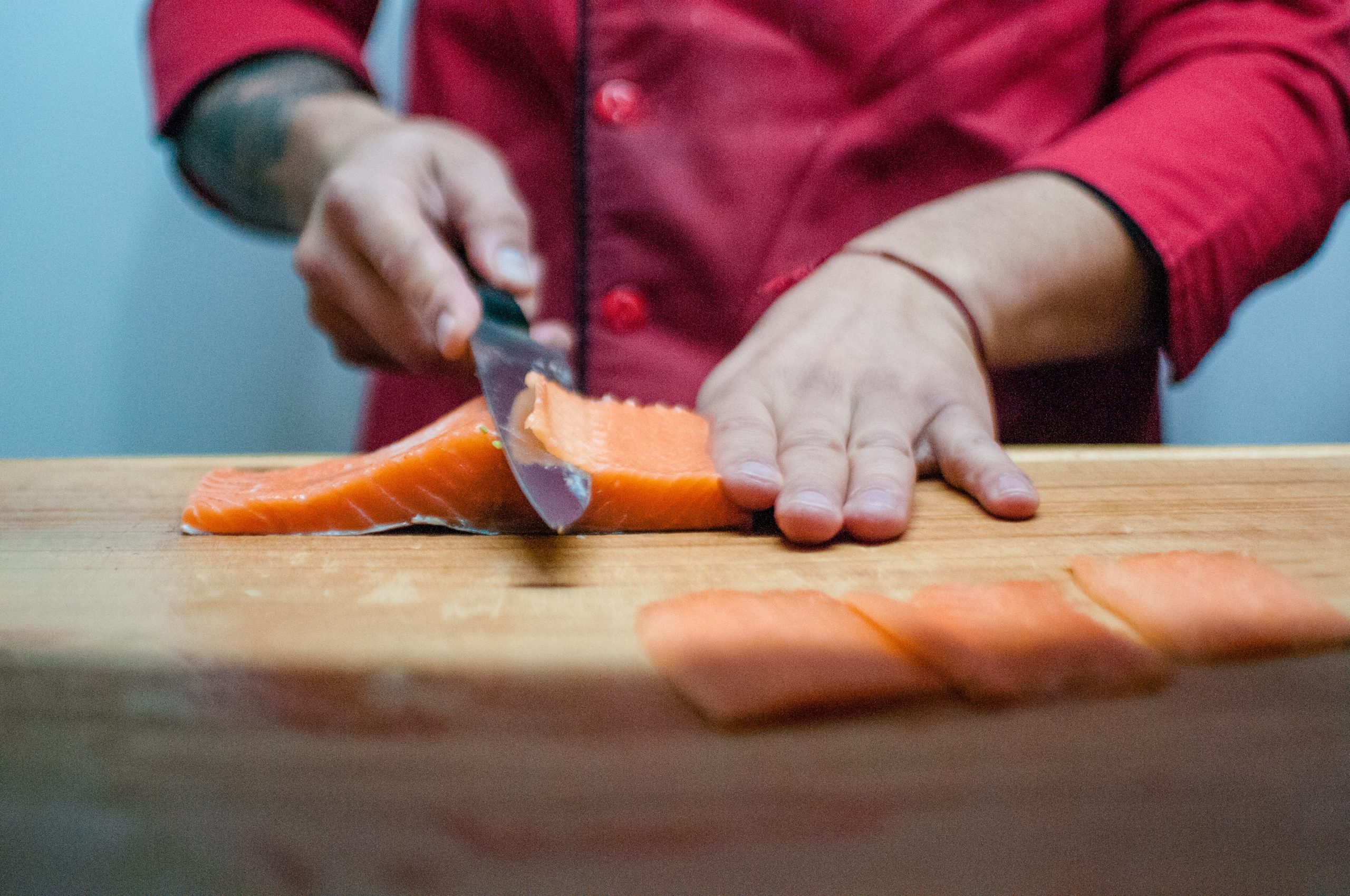Chapter 6. Proteins
Introduction

Learning Objectives
By the end of this chapter, you will be able to:
- Describe how proteins differ from carbohydrates and lipids.
- Describe the structure of amino acids and proteins.
- Explain the difference between essential and non-essential amino acids.
- Describe the functions of proteins in the body.
- Describe protein digestion and absorption.
- Summarize daily protein requirements
- Identify good sources of protein
- Describe the consequences of protein imbalance.
Protein is a vital constituent of all organs in the body and is required to perform a vast variety of functions. Therefore, protein is an essential nutrient that must be consumed in the diet. Indigenous peoples have a rich cultural heritage that values traditional animal protein sources, such as wild meats, which carry deep significance beyond their nutritional content.[1] For many Indigenous peoples, including those in southern British Columbia, salmon is an essential resource. Before the arrival of European settlers, salmon was a key trade item, which contributed to the economy of the First Nations. [2] [3]
Fish is known to be a complete protein source, meaning all nine essential amino acids are present in the recommended amounts needed. Indigenous peoples prepare and eat salmon in a variety of ways. For example, if caught in the winter, salmon was eaten fresh by people of the Fraser Valley but dried when caught in summer or fall. Similarly, the Coast Salish also consumed dried salmon as an important food source, dipped in oil that was served in clam shells. Salmon was also smoked, and heads were roasted, dried, and used to make a soup. Along the Fraser River, the Coast Salish obtained salmon oil by exposing an entire fish to the sun and allowing it to decay in a container made of wood.[4].

Media Attributions
- Salmon © Karyna Panchenko is licensed under a CC BY (Attribution) license
- A man slicing salmon © Juan Manuel Núñez Méndez is licensed under a CC BY (Attribution) license
- Earle L. Traditional Aboriginal Diets and Health [Internet]. 2011 [cited 2023 Feb 15]. Available from: https://www.nccih.ca/495/Traditional_Aboriginal_diets_and_health_.nccih?id=44 ↵
- Accessed on March 7, 2023: https://www.fnesc.ca/wp/wp-content/uploads/2019/08/3.6-Salmon-and-Interconnectedness-1.pdf ↵
- Accessed on March 7, 2023: http://traditionalanimalfoods.org/fish/searun-fish/page.aspx?id=6446 ↵
- Accessed on March 7, 2023: http://traditionalanimalfoods.org/fish/searun-fish/page.aspx?id=6446 ↵

